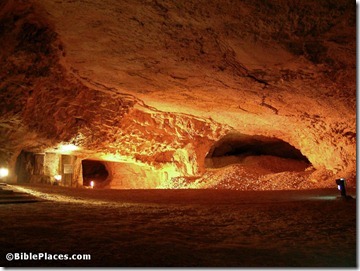The traditional names for the massive quarry underneath the northern part of Jerusalem’s Old City are likely incorrect. Nadav Shragai reports on the cave, its likely origin in the time of King Herod, and its significance for Freemasons over the last 150 years.
Since that time, the Freemasons in Jerusalem have been unable to return to the Temple Mount. The alternative has been Zedekiah’s Cave, just a short distance from Damascus Gate. This huge chalky cave, which has always been shrouded by mystery, stretches across 9,000 square meters underneath the Muslim Quarter of Jerusalem’s Old City and continues until the Via Dolorosa in the Christian Quarter just north of the Temple Mount.
A number of historical sources claim that the cave continues southward to the Temple Mount area, yet we now know that these claims have no basis in fact. A mapping of the cave undertaken by the Israel Antiquities Authority in recent years debunks this theory.
Ancient traditional beliefs that posit the cave – which eventually became a giant quarry – was source for stones that were used in the construction of Solomon’s Temple also do not square with the facts. (In English, the cave is known as King Solomon’s Quarries.) There is no indisputable archaeological evidence that traces quarrying activity in the cave back to the days of the First Temple. It has been widely believed that Zedekiah, the king of Judea, fled the Babylonians through the cave.
Still, Dr. Yechiel Zelinger, the IAA’s excavation director, who led the exploratory digging of the cave in recent years, reveals that a great deal of evidence indicates traces from the Second Temple period. This has led experts to the more likely possibility that the cave was one of the primary sources of stone utilized by Herod the Great when he built the temple 2,000 years ago.
This assessment is based on findings that indicate hallmarks of the style of quarrying acceptable in those times. These hallmarks are evident on the cave walls as well as in the stones, whose size is characteristic of the stones that made up the walls surrounding the Temple Mount.
Another factor was the cave’s proximity to the Temple Mount as well as its relatively higher altitude compared to the mount, which suggests that it was easier to move the stones. This theory rests on more solid footing than the fairy tale linking the area to Solomon’s Temple.
The full story is here.
HT: Joseph Lauer
